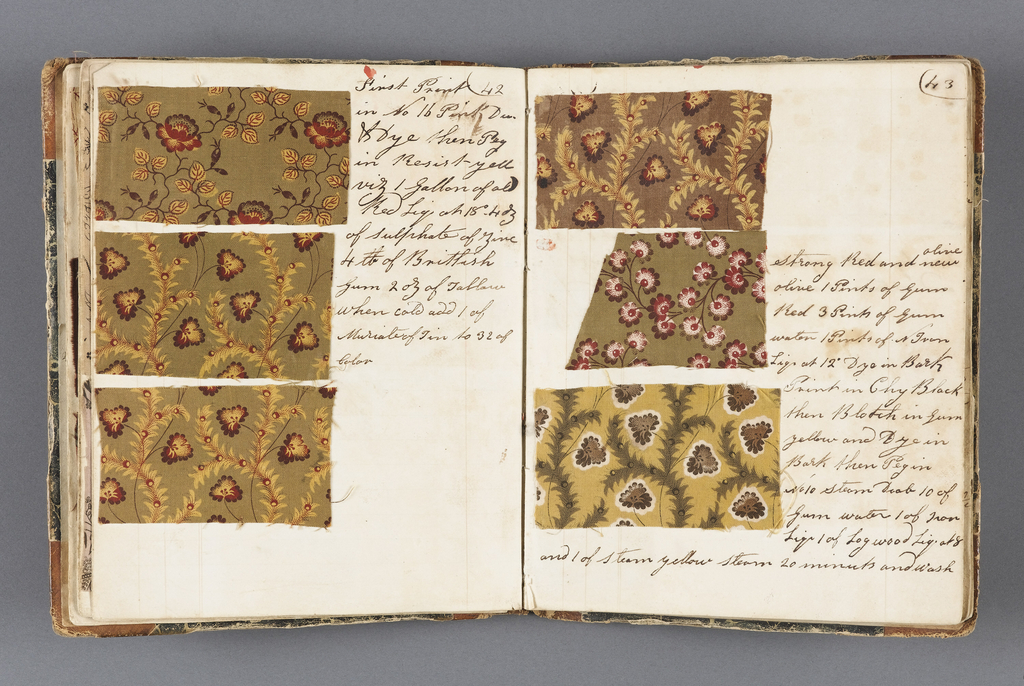In the Textiles collection is a wonderful example of a dyer’s record book for printed textiles. The book has special significance as it was the personal property of Edmund Barnes, a textile dyer and printer from northern England. Barnes was working at an unspecified print works, probably in the early 1820s, when he began recording his dye recipes. The inside cover has an inscription: “Blackford Bridge near Bury,” which is near Manchester, England – an area known for its leading role in the development and mass manufacture of printed textiles in the nineteenth century.
Page from Edmund Barnes’ record book showing swatches and notes.
Study of Barnes’ book reveals that at some point in late 1820s, Barnes left England for New Hampshire where he was employed by the Dover Manufacturing Company to teach American apprentices the practice of “steam printing,” a process used to produce colorfast fabric. His first entry there is “Dover Nov 18th 1829,” and he continued to add recipes and swatches until the early 1830s. “Providence” is inscribed on the inside back cover of the book, and research shows that Barnes left New Hampshire for Rhode Island as another of his record books is in the Museum at the Rhode Island School of Design.
Barnes worked in the textile industry in the period before the development of synthetic dyes. Cotton could be resistant to the many forms of dyestuffs that readily dyed fibers like silk and wool. Barnes’ book contains dye recipes for cotton that include typical ingredients like cochineal, madder and logwood. Other substances used were alum, dung, lignin, pipe clay, prussiate of potassium, and chromate of potash. Some of these ingredients are metallic salts or mordants traditionally used in applying dyestuffs to cotton. Mordants act on dye molecules by breaking their existing chemical bonds so they will form new bonds with the cotton fabric. The dyer’s record book provides a fascinating glimpse into the chemistry and manufacture of early nineteenth century textiles.

